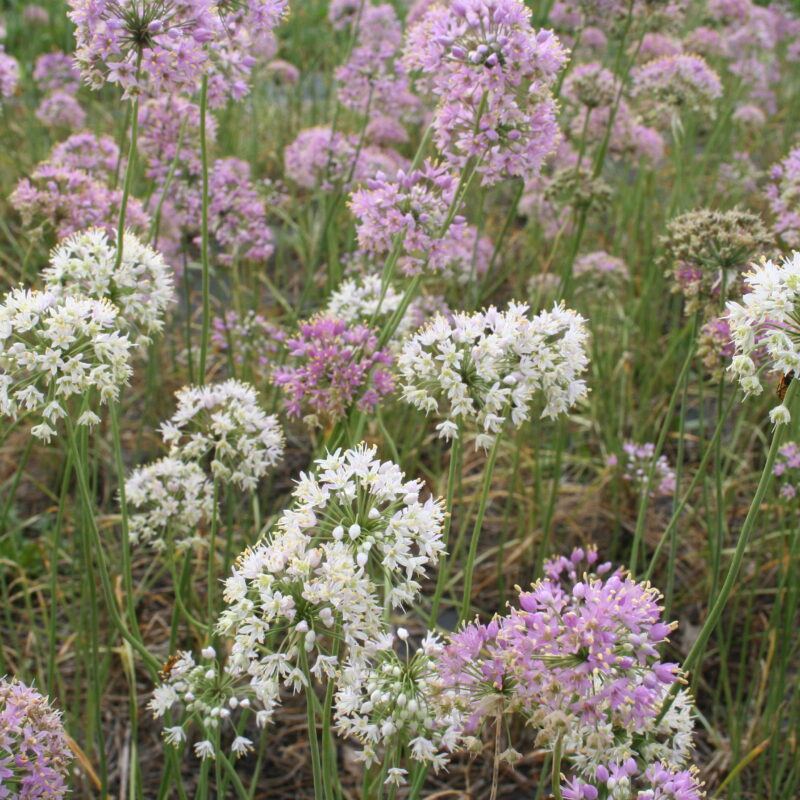Prairie OnionAllium stellatum
A native perennial herb that grows to 1-2'. Prairie onion can be used for the edges of rainwater gardens and upland buffers. Plant in groups for more visibility. Prairie wild onion does not compete well with aggressive native grasses. Even though this plant can be used for food, please do not pick or dig up this plant from natural conditions.
USDA symbol: ALST
General Information
| Plant Type | Forb |
|---|---|
| Height | 2 feet |
| Light Exposure | Sun, Part Sun |
| Soil Moisture | Dry |
| Bloom Color | Pink |

Tolerances
| Flooding / Inundation Tolerance | Moderate |
|---|---|
| General Resilience | 6 |
| Salt Tolerance | Low |
| Stress Tolerance | General Disturbance |
Pollinator Value: High
| Bloom Months | July to September |
|---|---|
| Pollinator Benefit | Insect Pollinated, Provides Nectar, Supports Generalists |
Project Planning
| Project Type | Boulevard, Rain Garden, Sandy or Engineered Soils, Upland Buffer |
|---|---|
| Coefficient of Conservatism | 8 |
| Herbivore Sensitivity | Low |
| Lifespan | Perennial |
| Rate of Spread | Slow |
| Soil Stabilization | Shallow |
| Vegetative Reproduction | Clonal |
Range
| County | Becker, Beltrami, Benton, Big Stone, Carlton, Cass, Chippewa, Clay, Cook, Cottonwood, Crow Wing, Dakota, Douglas, Grant, Hennepin, Hubbard, Isanti, Itasca, Jackson, Kandiyohi, Kittson, Koochiching, Lac qui Parle, Lake, Lake of the Woods, Le Sueur, Lincoln, Lyon, Mahnomen, Marshall, Martin, McLeod, Meeker, Morrison, Mower, Murray, Nobles, Norman, Olmsted, Otter Tail, Pennington, Pipestone, Polk, Pope, Ramsey, Red Lake, Redwood, Renville, Rock, Roseau, Sherburne, Sibley, St. Louis, Stearns, Stevens, Swift, Todd, Traverse, Wadena, Washington, Watonwan, Wilkin, Wright, Yellow Medicine |
|---|
